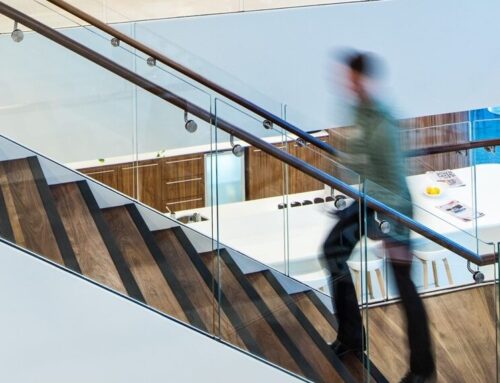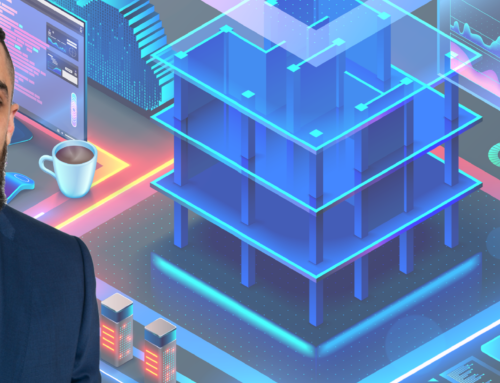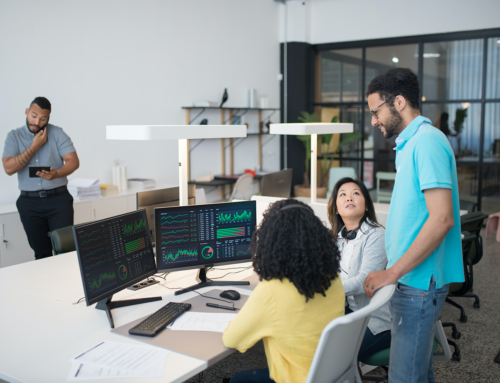22 June 2020
Hayley Koerbin, Wellington, New Zealand
Hayley leads the NZ division of NDY’s Global Sustainability Group, a team of highly skilled and diverse consultants driving sustainability solutions across the built environment. Highly passionate and sought after for her expertise in Green Star and the WELL Building Standard, Hayley’s knowledge covers sustainable building design, analysis of building environmental quality, sustainability rating tools and occupant health and wellbeing. Hayley is motivated and strong in sharing knowledge, listening and delivering exceptional results for her clients.
What’s your earliest memory in your journey towards a STEM career, and what inspired you to become an engineer?
I’m actually not an engineer, but a building scientist by qualification. Back in high school I was tossing up between graphic design, architecture and engineering. I was lucky enough to have a close family friend who is an engineer and invited me into the office he worked at to see what ‘real life’ engineering was like. I spent the day with a couple of the team members who had studied building science and were working on building physics modelling – predictive energy use, computational fluid dynamics etc. I walked out fascinated and that was the beginning for me!
What does career success look like to you, and what achievements or projects are you most proud of to date?
Career success to me is seeing people thriving in the buildings I’ve worked on. A career defining project for me was working on the Sunshine Coast University Hospital and related sustainability rating tool which took the benchmarking and design of sustainable healthcare facilities to a new level. I was also very privileged late last year to receive a WELL leadership award recognising my contribution to advancing the health and wellbeing buildings movement across Australia and New Zealand.
How would you describe your role?
The classic sustainability consulting job focuses on reducing environmental impact: carbon emissions, potable water consumption, toxic materials and waste. But as sustainability thinking has matured from purely environmental to include social and governance layers of sustainability so has the role of a sustainability consultant. My role includes design, operations and policy advice across a whole range of issues and focuses on environmental sustainability, health and wellbeing. Working as a team lead means I wear multiple other hats too as a project manager, work winner, client manager, team manager and mentor.
What does a typical day look like for you and what are you currently working on?
A typical day doesn’t exist in the world of sustainability or as a discipline lead! I’m currently working on a range of projects across New Zealand and Australia including a couple of new office/hotel developments, a new national archives facility, and an existing building undergoing WELL Building certification.
What’s the best advice you’ve been given in your career, and what words of wisdom would you pass on to the next generation of engineers?
The best pieces of advice I’ve been given over the course of my career have always related to seizing opportunities and making things happen for yourself. Great companies don’t hire skilled people and motivate them, they hire already motivated people and inspire them. People are either motivated or they’re not. Be that motivated person and find something to believe in and be passionate about, bigger than the job at hand.
The 2020 INWED theme is Shape the World. How would you describe the role engineering plays in how we #shapetheworld, and how do you contribute?
Buildings affect our health, our work, our leisure, our thoughts and emotions, our sense of place and belonging. If buildings work well, they enhance our lives, our communities and our culture. Sustainability consulting/engineering directly contributes to shaping the built environment through ensuring we design resilient, sustainable, inclusive and healthy places.
Silvia Quaglia, Sydney, Australia
As part of NDY’s Digital group Silvia brings an in-depth knowledge of control system design and integrated network design using industry standard protocols, as well as optimization and energy efficiency. She tries to push the boundaries with helping NDY clients become data driven in how they plan, design, implement, and operate their facilities. Prior to joining NDY, Silvia worked in Switzerland as a system integrator for a control unit company and as a project manager for a BMS service company. She has a technical and methodical attitude, with a strong interested in new technology and green energy.
What do you love about science?
Ever since I read the book ‘Siddharta’ by Herman Hesse, I started to see myself as a seeker. Not the calm and peaceful type, but the restless type. I find my peace through science, as I feel that the beauty of science is that it provides you with the tools to help understand the secrets of our universe, and like me, science is restless, it evolves everyday with new discoveries but it is also built by rules. It is like an infinite puzzle where the shape of the piece is defined but the picture changes continuously the more new pieces that we insert.
Tell me a little bit about your background
My family has a long history as building constructors, so I have always been surrounded by an engineering and science environment. When I was little my mum was frequently taking me on construction sites and while I was there, I would try to understand how the different parts of building were working together. At first, I overestimated myself and I started a very tough engineering course at university. After I finished, I was exhausted and without any energy but much stronger and more aware of my capabilities. I Immediately started to work within the building automation industry. When I had my 30th birthday I felt that something was missing in my life, so I decided to make a big change and move to Australia, without knowing anyone here. The first months were very tough, but I do not regret a thing. In the end, a cousin of one of my father’s colleagues shared my CV with NDY and here I am.
What’s the best advice you’ve been given in your career, and what words of wisdom would you pass on to the next generation of engineers?
The best time to plant a tree was 20 years ago, the second-best time is now. Never be afraid to exit your comfort zone, never feel that you are too old or too young to do the next step, there is an entire world that is waiting to be discovered. One thing that I learned coming here, is how many ways you can design the same thing. So, stop yourself from using the sentence: We’ve Always Done It This Way.
How can the engineering profession be more inclusive, and how can it continue to engage more female engineers?
I’m going to tell you a little story. Last year I had this conversation with one of my friends. She was complaining about the fact that for Christmas, her husband’s company gave her daughter a ‘male’ toy as a present. So, I asked her: “what is a male toy?” And then she shows me: a car. Now if my friend, who is a doctor by the way, thinks that a car is a male present, we have a problem as a society. Gender stereotypes affect behaviour, study choices, ambitions, and attitudes about relationships. It should not be acceptable that 90% of the time I am the only woman in a meeting. Achieving gender equality will not happen overnight, therefore we need measurable action. This is why I think that quotas are really important in order to help rectify women’s under-representation in prominent positions and make it entirely normal for women to take up managerial roles in the political, economic and academic systems.
The 2020 INWED theme is Shape the World. How would you describe the role engineering plays in how we #shapetheworld, and how do you contribute?
Engineers can really make a huge difference on what the world will look like tomorrow, because good outcomes always start with good designs. My job is to provide an innovative environment where data related to different systems of a building can be shared and used for smart outcomes and useful insight. We can achieve big increases in building efficiency with just a little shrewdness.










